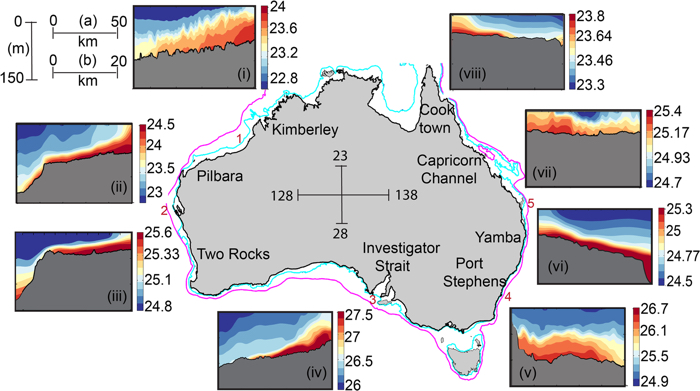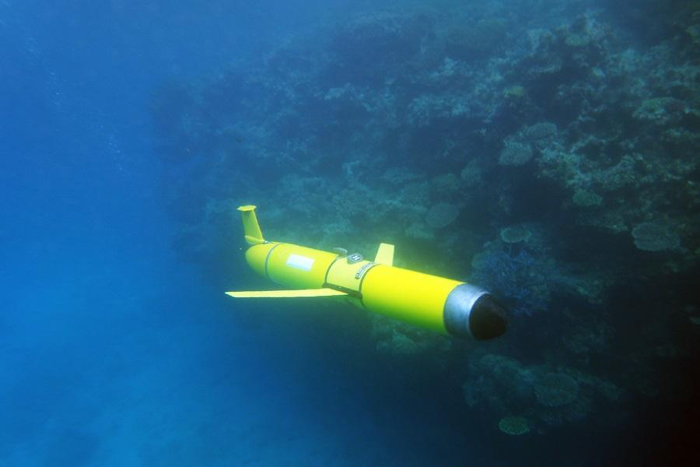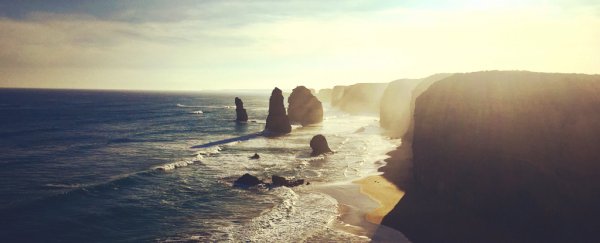Scientists have discovered an unprecedented system of underwater rivers flowing hidden from view along the continental shelf of Australia, on a scale unknown anywhere else in the world.
This phenomenon – called Dense Shelf Water Cascades – appears to surround most of the country, according to new data recorded by ocean glider submersibles, which so far have detected the underwater flows along more than 10,000 kilometres (6,200 miles) of Australian coastline.
"This is the most significant discovery for coastal oceanography in recent decades, not only in Australia but globally," says oceanographer Chari Pattiaratchi from the University of Western Australia (UWA).
Dense Shelf Water Cascades (DSWCs) are the result of changes in water density close to shore. Evaporation in the summer heat and reduced freshwater from rivers make for saltier coastal waters.
When weather conditions cool, that heavy salt water sinks even more than usual. Under the influence of gravity, the dense water flows offshore along the seabed - effectively an underwater river at the bottom of the ocean.
The process has been studied before – particularly in waters around the Australian coast – but until now nobody had realised that Australia seems to exhibit a unique, virtually continental-scale case of the phenomenon.
 DSWCs detected at eight sites surrounding Australia. (Mahjabin et al., Scientific Reports, 2020)
DSWCs detected at eight sites surrounding Australia. (Mahjabin et al., Scientific Reports, 2020)
Joining the dots required bringing together a vast amount of underwater observations recorded over several years by Integrated Marine Observing System (IMOS) submersibles operated by UWA researchers.
'This work was the result of a huge data set collected using IMOS ocean gliders over more than decade… equivalent to spending more than 2,500 days at sea," explains lead author and physical oceanographer Tanziha Mahjabin.
"This allowed us to examine data from different areas of Australia and also examine the seasonal variability."
The results, obtained between 2008 and 2019 from over 126 glider missions across eight different regions, show that the phenomenon is seasonally variable, peaking in winter months due to heat loss in shallower waters.
 An IMOS ocean glider. (Dennis Stanley/RRRC)
An IMOS ocean glider. (Dennis Stanley/RRRC)
Beyond just temperature considerations though, the effect of DSWCs could have significant implications on water quality in both the inner continental shelf and the deep ocean ecosystem beyond it, since the denser water that makes up the underwater river carries more particle matter contributed by onshore river systems.
"The coastal ocean is the receiving basin for suspended and dissolved matter that includes nutrients, plant and animal matter, and pollutants and represents an important component of the ocean environment, connecting the land to the deeper ocean," explains co-author and oceanographer Yasha Hetzel.
Discovering the ultimate effects of that will fall to future research, but in any case, Australia seems to be in a class all by itself, given all the evidence so far suggests the island continent may be surrounded by this unique feature.
"Cross-shelf transport, to which DSWC is a strong contributor, has a major role in ecosystem functioning and bio-geochemical processes as a conduit for the transport of nearshore water and dissolved and suspended material off the continental shelves," the researchers write in their paper.
"Higher concentrations of chlorophyll and suspended material together with offshore directed currents demonstrate that DSWC may have a major influence on the cross-shelf transport along coastlines extending over 10,000 km."
The findings are reported in Scientific Reports.
